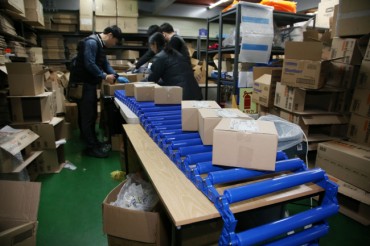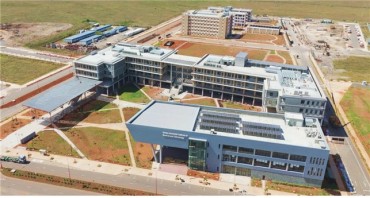
Technology to combat drowsy driving, a major safety hazard, will become commercially available this year. (Image: Yonhap)
SEOUL, Jan. 10 (Korea Bizwire) — Technology to combat drowsy driving, a major safety hazard, will become commercially available this year.
The Korea Transportation Safety Authority (TS) in a statement issued on January 9 unveiled its core areas of emphasis this year to be the improvement of road safety and the enhancement of current R&D efforts in next-generation technologies.
Last April, the TS, after developing a warning system to jolt weary bus drivers from dozing off at the wheel, tested its creation on five long distance buses in the metropolitan area.
The system collects a diverse range of data from which it derives the probability that the bus will run into danger. Details such as the drooping of the driver’s eyelids to the bus’s unwieldy movements as well as the distance to the vehicle ahead are incorporated into its deliberations. Should the probability of danger pass a certain threshold, a wristband that the driver wears will vibrate with enough force to keep him or her awake.

Should the probability of danger pass a certain threshold, a wristband that the driver wears will vibrate with enough force to keep him or her awake. (Image: Yonhap)
The TS has scheduled for a second test run this April as it continues to iron out the various inefficiencies and kinks with the new system.
Also scheduled for this year is the completion of a self-driving vehicle test range christened K-City.
Last November, K-City’s expressways were paved, and in December, the world’s first 5G network was draped over the complex.

K-City, with its recreated bus lanes, school zones, toll booths, intersections and pedestrian crosswalks – all of which came at a cost of more than 11 billion won – will provide a rich diversity of environments for major tech and auto firms from Hyundai to SK Telecom to experiment with the latest in self-driving technology. (Image: Yonhap)
K-City, with its recreated bus lanes, school zones, toll booths, intersections and pedestrian crosswalks – all of which came at a cost of more than 11 billion won – will provide a rich diversity of environments for major tech and auto firms from Hyundai to SK Telecom to experiment with the latest in self-driving technology.
S.B.W. (sbw266@koreabizwire.com)






